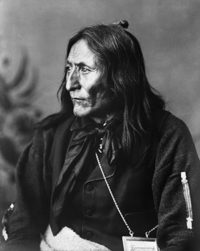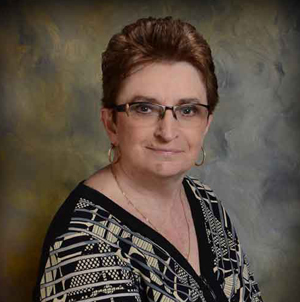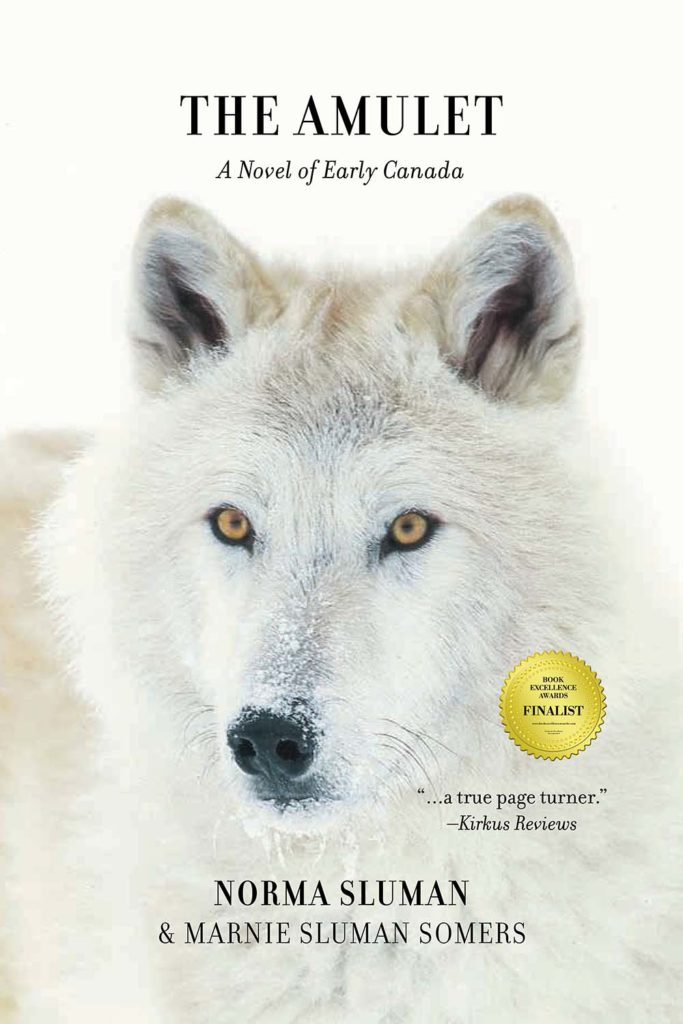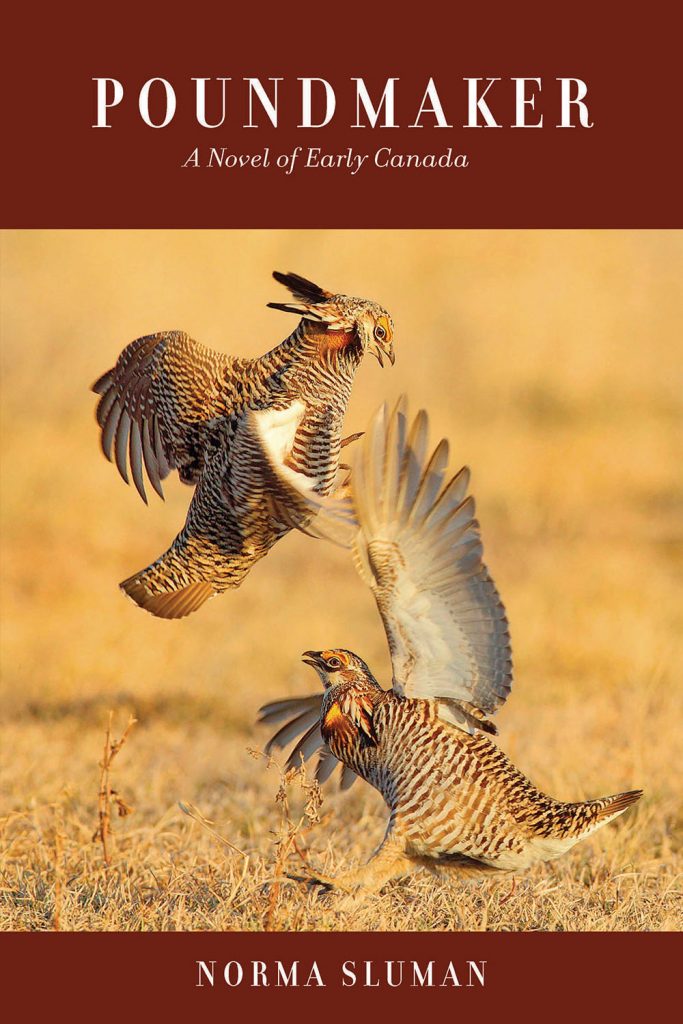In the late 1800’s, Blackfoot Crossing (above) was a favourite encampment of Crowfoot, famed Chief of the Blackfoot Confederacy. The crossing was situated on the Bow River in what is today southern Alberta. Crowfoot appears in all three of Norma Sluman’s novels: Blackfoot Crossing, Poundmaker and The Amulet.
(Glenbow Archives NA-1237 – Glenbow Foundation, Calgary, AB)

Crowfoot had become concerned about raids between Blackfoot and Cree bands, who warred over scarce resources in the early Canadian west – they fought over territorial and hunting rights, and stole each other’s horses. Chief Crowfoot understood that too many fine young warriors on both sides were being killed, putting all Indigenous peoples at risk. He had recently lost a beloved son to just such skirmishes.
(Glenbow Archives ND-8-390 – Glenbow Foundation, Calgary, AB)
Out of grief for his lost son, Crowfoot sought to end the fighting and create a coalition of Indigenous peoples now faced with incursions into their territories by fur trappers, whiskey traders, and European settlers. So, he gathered his grieving family and visited a Cree village to open negotiations for a truce.
Upon his party’s arrival in the Cree village, Crowfoot’s head wife, Cutting Woman, spotted Poundmaker and was overcome by his resemblance to their deceased son. Crowfoot agreed, and moved forward to speak with the young Cree, telling Poundmaker…
…in a dream, I was in a Cree camp, but not to raid or fight. I was giving gifts and smoking with them in friendship. There was still sorrow in my heart, but all the pain of it was gone. I decided to try to make that dream come true. One of our hunters discovered your camp. And in this camp my woman found you. You are guided by dreams and visions just as we are. But they are just that—signs to point out the way, a beginning. I think I was meant to find you here today. Now I go on from that. I would like you to come to visit my camp; to be an honoured guest in my lodge.
(Excerpt from Poundmaker by Norma Sluman)
Poundmaker’s family argued against his visit to Crowfoot’s camp because the Blackfoot and Cree were traditional enemies. But, Poundmaker felt strangely compelled to go and he agreed to meet the chief in four days at Blackfoot Crossing.
The bond between Crowfoot and Poundmaker grew steadily during their month-long visit, as they spoke of their mutual concerns for the future. Crowfoot convinced Poundmaker that the white man’s expansion into their territories could only be held at bay, if a truce could be negotiated between the warring bands. Poundmaker believed he would have little influence as he was not from a powerful Cree family. Crowfoot countered with an offer to formally adopt Poundmaker as his own son and he could not refuse such a generous gesture. Poundmaker returned to his Cree camp bearing many gifts of furs and horses, as befitted a son of the great Chief of the Blackfoot Confederacy. And so began Crowfoot’s and Poundmaker’s attempts at peace.
Crowfoot and Poundmaker spent years parleying a truce between their respective First Nations, knowing they needed a unified front when it came to negotiating with the Government of Canada. The catastrophic slaughter of millions of bison deprived their people of the one staple which supplied food, robes, hides for lodge coverings, and even buffalo chips for fuel. Westward expansion also brought waves of diseases including smallpox and tuberculosis decimating the plains bands, which lacked immunity. Crowfoot had profound misgivings—that his peoples’ cherished beliefs and life-long relationship to their environment would soon become obsolete; and that their very existence would be swiftly and irrevocably altered.
During a ceremony at Blackfoot Crossing, on September 22, 1877 Crowfoot was presented with the terms of Treaty 7 by the Government of Canada. The Crown agreed to provide education, agricultural assistance, and annual treaty payments, in return for First Nations ceding their land. At that time, the Indigenous people believed it to be more of a peace treaty and agreement to share—not to surrender—their traditional lands. But, Crowfoot, Poundmaker and other leaders were left with no viable alternative in bargaining with the Crown.
Despite this, Crowfoot and other leaders made their marks ceding roughly 130,000 km² of land from the Rocky Mountains to the west, the Cypress Hills to the east, the Red Deer River to the north, and the US border to the south.
Formalizing Treaty 7 cleared the way for greater settlement of the region, enabled the completion of the transcontinental railroad, and created reserves, still home today of the Siksika (Blackfoot), Stoney, Blood and Sarcee First Nations.
For an interactive map of Indigenous treaties, territories, and languages, visit https://native-land.ca/

Marnie Somers, HF Co-author & Publisher
Marnie Sluman Somers was born in Toronto, she lived for ten years in Calgary, before returning to Toronto for public and high school. She moved to Winnipeg at twenty and has lived in rural Manitoba ever since. Marnie had a long career working in both the private and public sectors, during which she honed her writing skills. She became a full-time freelance writer in 1997 creating news releases, magazine feature articles, and marketing content. She currently lives on an acreage near Carberry, Manitoba with her partner, Wilf.
Check Out Our Books:
Not a member of our FREE Book of the Month Club yet? What are you waiting for?
Want a chance to win a free book written by a different Canadian author? Join our Free Book of the Month Club! Every month we review a book by a Canadian author and give it away to one of our email subscribers. Our goal is to share the work of other Canadian authors to help readers find other writers.




